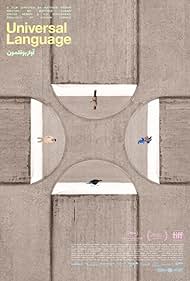An absurd triptych of seemingly unrelated stories finds a mysterious point of intersection in this story set somewhere between Winnipeg and Tehran.. Canada’s official submission for the “Best International Feature Film” category of the 97th Academy Awards from 2025.. These EyesWritten by Randy Bachman and Burton Cummings Performed by The Guess Who. From the cinematography and usual search for symmetry, whether static or in travel shots, and a pleasant aesthetic with a dreamlike atmosphere that enhances the universality of the setting, to its story that revolves around the various characters, how their lives intersect and enliven a dialogue that is sometimes polite, sometimes not. so much so, a Wes Anderson influence runs through Matthew Rankin’s feature film from start to finish. As with Anderson’s films, Rankin’s is interested in exploring the reality of his film, a reality full of idiosyncrasies that serve as fertile ground for comedy. An angry teacher in a classroom yelling at students, one of whom claims a turkey stole his glasses; another is dressed as Groucho Marx because he wants to be a comedian; and another as a fashionista. An independent tour guide with odd choices for his tour etc. With a comedy consisting of ironic, deadpan and dark humor, Une langue universelle manages to be hilarious every time it wants to be. There are many times when its happenings border on the absurd or surreal, promoting the comedy that bathes it, but never undermining its purpose of provoking thoughtful depth. Rankin’s dexterity manages to evoke a surreal dreamlike fable, but also an expressive introspective melancholy. Elements and feelings that come together and give life to a special experience between places and times, realities and dreams. For example, in the reality of the film, even though we are in Canada, French, let alone English, seems to be a second language, and in its place there is Persian. Everyone speaks it, and signs and billboards are written in it, making the result as something close yet distant, known and unknown blending into a culturally and demographically blind new reality. As for the cinematography, often similar to Anderson’s, more in framing and movement than color palette, there is a constant desire to inhabit the spaces in which the characters are located. The camera is sometimes static from a distance, noting their movement and how it affects their surroundings instead of focusing on their faces and expressions with close-ups. It’s as if the place is as important to the story as the characters, and Rankin wants to make sure we immerse ourselves in it as tourists in a foreign land. And while in terms of name we may know these cities, within the film and its demographic profile not matching our knowledge, there may be reasons to delve into these spaces.



 26/15
26/15